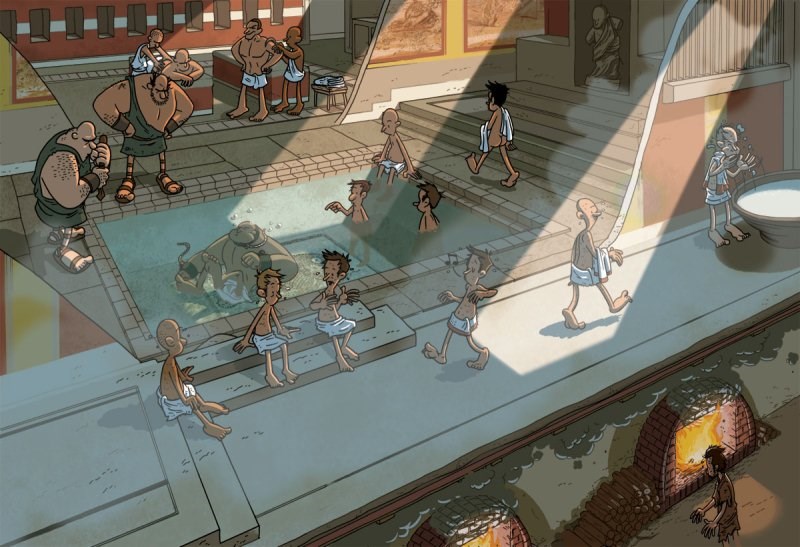Public bathing
What does the practice of public bathing tell us about Roman life?
In the city of Pompeii there were three public baths which citizens were able to visit. Visitors had to pay an entry fee. Bathing was very important to Romans and it was a communal event.
Activity 1: Investigate primary and secondary sources
Inquire
- Using the image gallery and Seneca's letter, create a table that shows the following:
- the author of the source and when it was created
- the type of resource (primary or secondary source)
- for a primary source: your interpretation of the source, what it shows, how it was used and what it tells us
- for a secondary source: your explanation of how the information about the public baths is constructed. For example: examine the words Seneca uses, explain the colours and what is shown in illustrations. - How and why does the information obtained from these sources differ? Which sources do you believe?
- Apart from excavations, accounts and official documents, objects found at historical sites can provide additional clues to historians about events, people and customs. Search on the Internet for images of objects which were found in public baths in Pompeii. Investigate these objects by adding and completing the information for them in the table you created earlier.
- Compare your table with one of your classmates. How do your findings differ?
- Now that you have analysed available sources, is there any other information you need to complete your response to the inquiry question: What does the practice of public bathing tell us about Roman life?
Activity 2: Create a secondary source
Generate and develop ideas and possibilities
- You have now researched, collected and evaluated several types of historical sources. The next step is to create your own secondary source. Your source needs to include the evidence and information you derived from primary sources into a meaningful narrative.
- Brainstorming the structure and the format is a good way to start. Your own secondary source can be any of the following:
- digital story
- written account
- historical picture book (with clear explanations of your choices).
Reflect on thinking
- In developing your response, how did you determine which sources were appropriate?
- Reflecting back, is there a better way that you could have investigated the past?
- How much has your opinion about the use of public baths and its impact changed since you started your investigations?
Analyse, evaluate and synthesise
- Baths require a constant supply of water. How was water supplied to the public bathhouses? Draw a diagram with explanations of water supply to Pompeii.
- Look at the illustration again and write a dialogue between two of the Romans in the picture.
- What do you think would be the challenges in managing a Roman public bathhouse? How would you resolve them?








